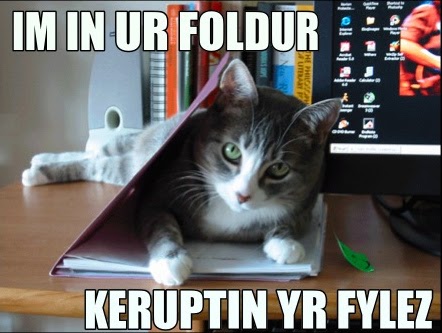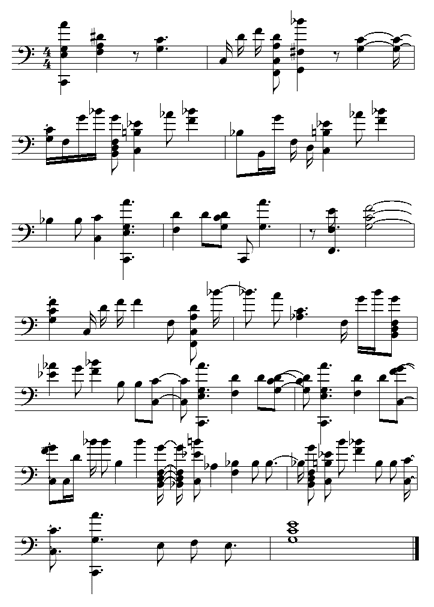Someone who said it was no fun with programming certainly didn’t know what he was saying. The authors of the following programming languages were able to combine pleasant with useful and on the basis of crazy ideas, they created source codes whose syntax has nothing to do with classic programming languages, and yet can be used to create programs and commands. Here are 6 unique programming languages that sound and look a bit frivolous, but work quite seriously:
LOLCODE
A veteran of specific programming languages is undoubtedly LOLCODE, a programming language created in 2007 by Adam Lindsey. The inspiration for the creation of this language was Lolcat – fun, popular internet forum, which consists in creating memes with a cat image, with a funny caption and incorrect syntax, along with deliberate errors in the spelling of individual words.

It is the unusual notation of memes that became the basis of the LOLCODE language, because commands are written in slang and if it is understandable to the recipient, it is enough to read the LOLCODE syntax. Here is an example of “Hello World” in LOLCODE:
HAI – “Hello”
CAN HAS STDIO? – Responsible for loading libraries with additional functions
VISIBLE “HAI WORLD!” – Responsible for the visibility of the text
KTHXBYE – Command to end each program
Interestingly, the LOLCODE language lends itself to common use due to its complementarity. You can also find a lot of tutorials on the web dedicated to various LOLCODE elements.
ARNOLD C
ARNOLD C is a programming language inspired by … a real hero. The name comes from the name of Arnold Schwarzenegger, the lead actor in the cult series “Terminator”, and the language syntax includes quotes from these films only. So if you are a brother with a story about the bloodthirsty android, you should also have no problem understanding how “Hello World” is coded in ARNOLD C:
IT’S SHOWTIME
TALK TO THE HAND “hello world”
YOU HAVE BEEN TERMINATED
You don’t need a translation for this example, do you?
WHITESPACE
Whitespace relies on characters that represent invisible white space on the page, such as spaces, tabs, or new lines. Any other command or character is ignored. But how does it actually work? Whitespace uses binary code to represent data with spaces as zeros and tabs as ones. So, for example, the sequence tab-tab-tab-space-space translates to 1100 in binary or “12” in decimal. Due to its specificity, and the fact that to create a classic “Hello World” in Whitespace, it is necessary to use almost 1000 invisible characters, the language itself is not very useful, it is rather a programming curiosity.
VELATO
VELATO is a programming language that was written using MIDI files. In this case, sound files play the role of both a piece of music and programming commands. The key values in this notation are the pitch of the notes and the size of the spaces between them. The spelling of “Hello World” in VELATO looks like this:

Source: http://velato.net/Language/HelloWorld/
reMORSE
As can already be seen, the creators of specific programming languages usually draw inspiration from already existing elements of culture or science. It is no different in this case – as can be deduced from the name, reMORSE is based on the assumptions of the Morse language. There are only four commands: period (.), Period (. And space), dash (-), and dash (- and space). The reMORSE specification is incomplete because the author himself did not complete it.
Over the years, variants of the reMORSE language have been developed in the form of: reMorse2, reMorse2.- and reMorse4ever, which were designed to fill in the gaps in the original version of this language, unfortunately none of them is perceived as comprehensive, ready for potential use, code. Below, the word “Hello World” in reMORSE:
– – – ..- …-.—.;newline
– – – .-. – ..-.- …-. —.;!
– – – …- . . -.—.;d
—-. . . -.—.;l
—-. . -…—.;r
—-. -…—.;o
—-…-.- ..-. —.;W
//author didn’t feel like doing this part
-…………..;output all characters
SHAKESPEARE
SHAKESPEARE is a programming language intended to give the impression that it is anything but source code. Therefore, at first glance, SHAKESPEARE seems only to be a dramatic art, and that’s because it is made up entirely of acts, scenes and characters, that is, elements that habitually create drama. Sounds like crazy? Definitely yes, but there is a method to this madness.
In the SHAKESPEARE language, the characters assume the role of variables, while their statements are treated as expressions with variable values. The questions asked by the characters to each other are conditional instructions, while the values define adjectives and nouns. Apart from the evident inversion of conventions, it is characteristic of the SHAKESPEARE language that the programs written in it are very long. Here is an excerpt from “Hello World”:

This is just a small sample of the weirdest “Hello World” instructions in the world – you can find many more online, and we’ve picked out the ones we think are the most interesting. Considering that the IT industry is growing at a dizzying pace, there are about 7,000 programming languages in the world, and by the time you read this article, there are probably three or four new JavaScript frameworks, such small, witty deviations from the norm do not counterbalance for “serious” programming. However, we believe that they are needed because they show how to play with coding and create something that may not be particularly useful, but it reveals the humorous and humorous side of the IT industry, which is so much talked about and definitely too rarely shown.